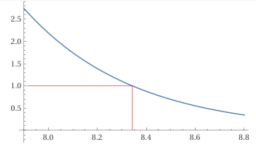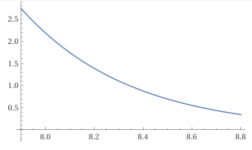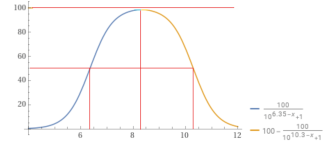A pH of 8.2 to 8.3 might be a good choice as long as you can keep it there accurately and maintain a good CSI.
pH....................%CO2
7.0........................18.292
7.1........................15.097
7.2........................12.377
7.3........................10.088
7.4........................8.183
7.5........................6.611
7.6........................5.324
7.7........................4.275
7.8........................3.426
7.9........................2.741
8.0........................2.189
8.1........................1.747
8.2........................1.392
8.3........................1.109
8.3456.................1.000
Percent Carbon Dioxide.


 www.wolframalpha.com
www.wolframalpha.com
 www.wolframalpha.com
www.wolframalpha.com


____________________________________________
Percent Bicarbonate vs. pH.

pH....................%CO2
7.0........................18.292
7.1........................15.097
7.2........................12.377
7.3........................10.088
7.4........................8.183
7.5........................6.611
7.6........................5.324
7.7........................4.275
7.8........................3.426
7.9........................2.741
8.0........................2.189
8.1........................1.747
8.2........................1.392
8.3........................1.109
8.3456.................1.000
Percent Carbon Dioxide.


y = 100/(10^(6.35 - x) + 1) and y = 100 - 100/(10^(6.35 - x) + 1), x = 4.5 to 8.3 - Wolfram|Alpha
Wolfram|Alpha brings expert-level knowledge and capabilities to the broadest possible range of people—spanning all professions and education levels.
y = 100-(100÷(1+10^(6.35 – x))), from 7.9 to 8.8 - Wolfram|Alpha
Wolfram|Alpha brings expert-level knowledge and capabilities to the broadest possible range of people—spanning all professions and education levels.


____________________________________________
Percent Bicarbonate vs. pH.

Last edited:









